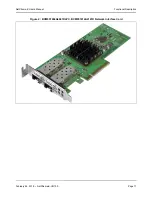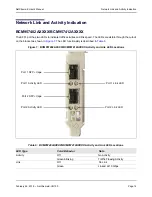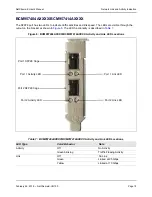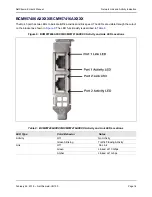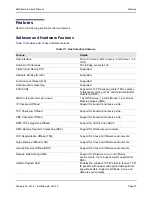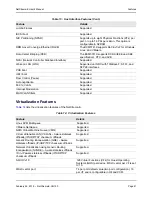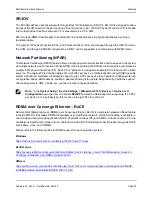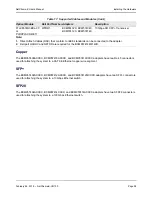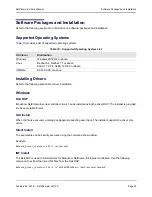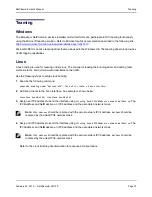
Features
NetXtreme-E User’s Manual
February 26, 2018 • NetXtreme-E-UG100
Page 23
Stateless Transport Tunnel Offload
Stateless Transport Tunnel Offload (STT) is a tunnel encapsulation that enables overlay networks in virtualized
data centers. STT uses IP-based encapsulation with a TCP-like header. There is no TCP connection state
associated with the tunnel and that is why STT is stateless. Open Virtual Switch (OVS) uses STT.
An STT frame contains the STT frame header and payload. The payload of the STT frame is an untagged
Ethernet frame. The STT frame header and encapsulated payload are treated as the TCP payload and TCP-
like header. The IP header (IPv4 or IPv6) and Ethernet header are created for each STT segment that is
transmitted.
Multiqueue Support for OS
NDIS VMQ
The NDIS Virtual Machine Queue (VMQ) is a feature that is supported by Microsoft to improve Hyper-V network
performance. The VMQ feature supports packet classification based on the destination MAC address to return
received packets on different completion queues. This packet classification combined with the ability to DMA
packets directly into a virtual machine’s memory allows the scaling of virtual machines across multiple
processors.
Refer to the
“Windows Driver Advanced Properties and Event Log Messages” on page 34
for information on
VMQ.
VMWare NetQueue
The VMware NetQueue is a feature that is similar to Microsoft’s NDIS VMQ feature. The NetQueue feature
supports packet classification based on the destination MAC address and VLAN to return received packets on
different NetQueues. This packet classification combined with the ability to DMA packets directly into a virtual
machine’s memory allows the scaling of virtual machines across multiple processors.
KVM/Xen Multiqueue
KVM/Multiqueue returns the frames to different queues of the host stack by classifying the incoming frame by
processing the received packet’s destination MAC address and or 802.1Q VLAN tag. The classification
combined with the ability to DMA the frames directly into a virtual machine’s memory allows scaling of virtual
machines across multiple processors.
SR-IOV Configuration Support Matrix
•
Windows VF over Windows hypervisor
•
Windows VF and Linux VF over VMware hypervisor
•
Linux VF over Linux KVM



